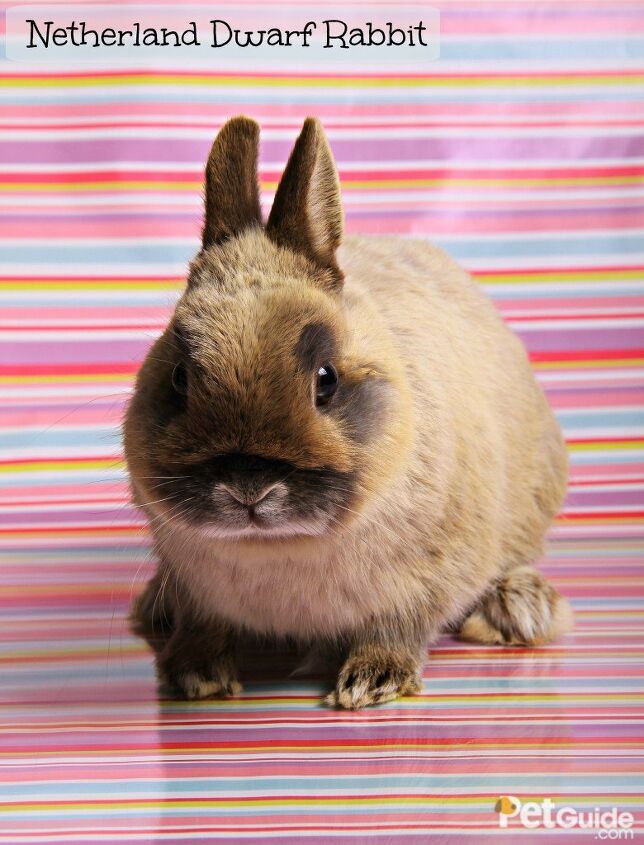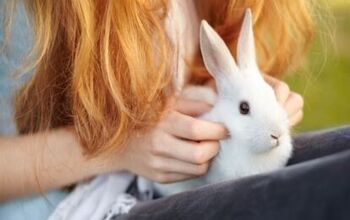Netherland Dwarf Rabbit


About Netherland Dwarf Rabbit
The Netherland Dwarf rabbit saw its first steps in Holland when a group of five men, led by Jan Meyering, worked for 30 years to develop a standardized small rabbit that would be accepted and available in a variety of colors. To create this breed, they bred all-white Hermelin rabbits with local native rabbits, as well as many other domestic breeds both small and large. The Netherland Dwarf rabbit was recognized by Holland in 1940.
A mere 17 Netherland Dwarf rabbits survived World War II and in 1947, several English breeders were given 9 offspring in a few colors and shades. In 1950, the British Rabbit Council recognized the new breed.
Finally, this rabbit breed arrived in the United States 15 years later in 1965, its purpose to breed and improve Polish rabbits in the United States. The American Rabbit Breeders Association (ARBA) accepted the Netherland Dwarf rabbit as a recognized breed in 1969 and today, it is one of the most popular rabbit breed in the world.
The Netherland Dwarf rabbit is one of the most popular rabbit breed in the world.
Netherland Dwarf rabbits have rather large eyes compared to the rest of its compact body, which makes for a cute rabbit. They have short, small ears carried high on their head and their face is round and short. They reach an adult weight of 2.5 lbs, which makes them look like a kit for the rest of their lives.
A Netherland Dwarf’s coat is not particularly difficult to maintain. It is short to medium in length, soft, and does not need much grooming to keep it in shape. Should you find that your rabbit is shedding more than usual, this may be due to the time of the year (shedding season). If you wish to brush your rabbit during this time so there is less fur in the house, use a bristled brush and stroke in the natural direction of its fur. Remember that rabbits should never be bathed, as this causes them great stress and may cause cardiac problems. If your rabbit’s fur is dirty, simply clean it with a damp cloth.
The Netherland Dwarf rabbit has many colors that are accepted by the ARBA. This includes Chinchilla, Tortoise Shell, Sable Point, Black Silver Marten, Blue Tan, Orange, Chocolate Himalayan, and more. There is no particular markings on this rabbit that makes this breed stand out from any other small/dwarf breed.
A Netherland Dwarf rabbit’s coat is short to medium in length, soft, and does not need much grooming.
A proper diet is probably one of the most important aspects of rabbit ownership. Two things should be given in unlimited amounts to ensure your rabbit is well fed and their health is maintained: fresh water and good-quality hay. Pellets, fresh fruits/vegetables and leafy greens should only make up 25 percent of its diet (or even given as occasional treats). Some rabbit-safe vegetables include carrots, fennel, broccoli, and cucumbers, and as for fruits, try to only serve your rabbit fruits that are low in sugar (such as apples).
The Netherland Dwarf rabbit is a small rabbit (one of the smallest of the dwarf varieties), and so their enclosure does not have to be large to keep them content. Because of its small size, we recommend this rabbit be kept indoors to keep them safe from predators and the elements. Cages should be made of wire and have a plastic bottom in order to line it with bedding. Bedding should be spot-cleaned every day to rid it of feces and needs to be completely replaced at the end of every week.
Should you wish to raise a well-socialized rabbit who enjoys human interaction, you must take this rabbit out of its enclosure and have regular playtime. These little rabbits may look adorable and fun, but they have a natural disposition to be a little on the shy side and will jump right out of your hand if s/he does not take to you. The more often they are outdoors being held, petted and simply being around humans, they more likely you will have a rabbit who enjoys your presence and who actually wants to be with you. With lots of playtime and patience, the Netherland Dwarf will easily befriend you.
Netherland Dwarf rabbits tend to be more at-risk to develop malocclusion. Malocclusion occurs when a rabbit has a growth spurt but the jaw and mandible don’t grow at the same rate. Consequently, the bottom incisors protrude from the upper incisors, which means they won’t connect with each other while chewing. Teeth will be unable to naturally be worn down and they grow out to control. Overgrown teeth can be a problem in other rabbits if their diet does not mainly consist of hay. If this does happen, malocclusion can be corrected with a trip to your local vet, where they trim your rabbit’s teeth.
Rabbits can be spayed/neutered for purposes of aggression. Bucks can be neutered as young as 3.5 months old, while does should wait until they are 4-6 months old before being spayed. Spayed/neutered rabbits tend to live longer than those who are not fixed.
Netherland Dwarf rabbits can be shy and slightly skittish.
Unlike other mini/dwarf rabbits who enjoy human presence, letting your Netherland Dwarf rabbit know that you mean no harm can be a little bit of a learning curve. Because of their naturally shy and slightly skittish disposition, we don’t recommend this rabbit for families who have young children, as they can easily be dropped and get hurt if they are far off the ground. Socialize these rabbits at a young age and offer plenty of human interaction – their shy nature should diminish and you’ll have an adorably energetic rabbit who enjoys the company of their human handlers. They are also great little bunnies for couples, singles or seniors who live in either a home or apartment.
Another learning curve is litter training. Like most rabbits, potty training them is arguably more difficult than teaching a dog/cat, but not impossible. Most rabbits “go” in a particular corner in their cage so it won’t be too hard to find out where they’d rather “go” in your home. Many rabbit owners have found success by placing several rabbit litter boxes around the house so they don’t have to hop all the way to their cage in order to do the deed. With lots of time, patience and rewards, it is very much possible to train these little bundles of fur where to do their business.
Pet rabbits who are out of their enclosures generally need some toys to keep them occupied. This can be as simple as a few rolls of empty toilet papers rolls they can chew up. It all depends on your rabbit’s personality and what they personally like to play with. As with any pet, be sure you rabbit-proof your room.
Photo credit: Joss/Bigstock; kitkana/Bigstock; PRPics/Bigstock

More by Diana Faria

























